Hemingway in Paris – A Search with David Burke
It’s a a beautiful Spring day and I’m off in search of Ernest Hemingway in Paris with guide David Burke. Won’t you join us?
Ernest Hemingway treated his children badly, his friends worse and his wives abominably, but he was one hell of a writer which is why I’ve been an admirer of his (well his writing) for over fifty years. I cut my literary teeth on his short stories, particularly those featuring Nick Adams, who I identified with, both of us growing up in fairly remote rugged areas. I thought and still do that A Farewell to Arms is a great love story and For Whom the Bell Tolls a great war story. Even his most strident critics usually grudgingly concede that The Old Man and the Sea is a brilliant work of literary analogy. I have made it a point to seek out Hemingway locations whenever I can and previously met him in spirit in Key West.
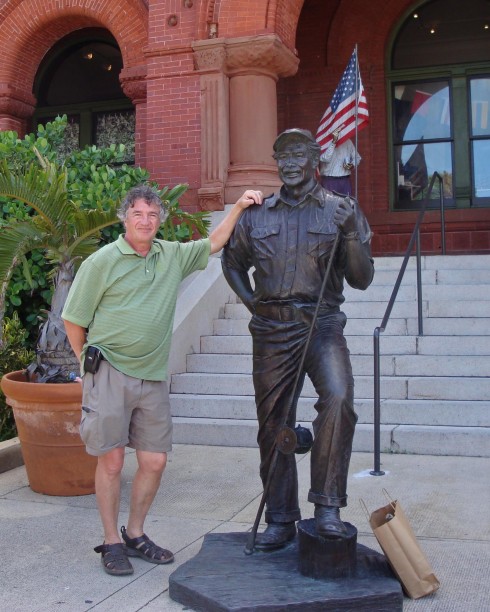
In Pamplona, Spain.
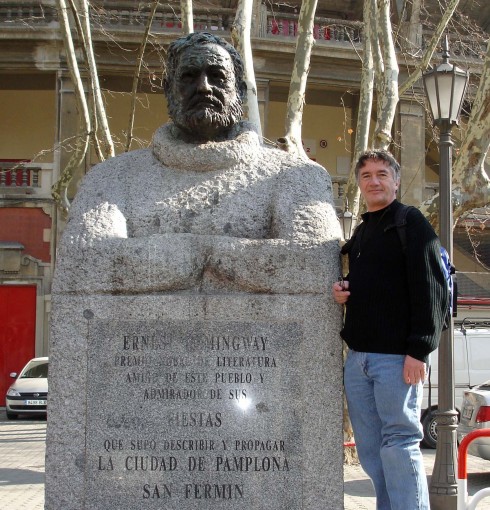
In his home town of Oak Park, Illinois.
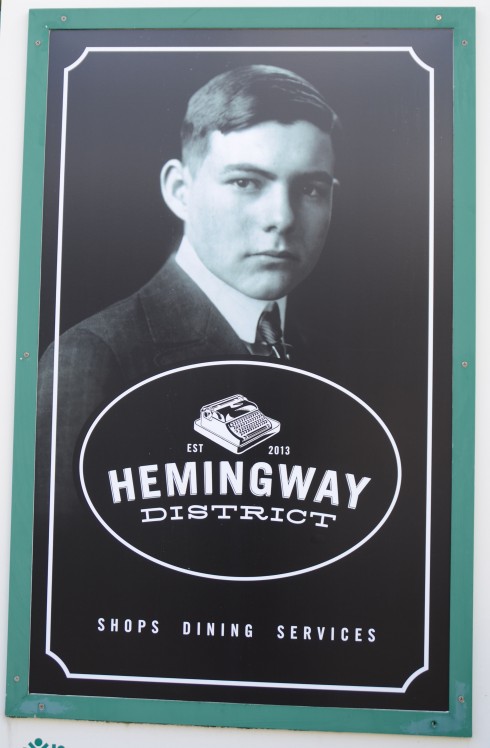
In Africa at a great hotel named for him.
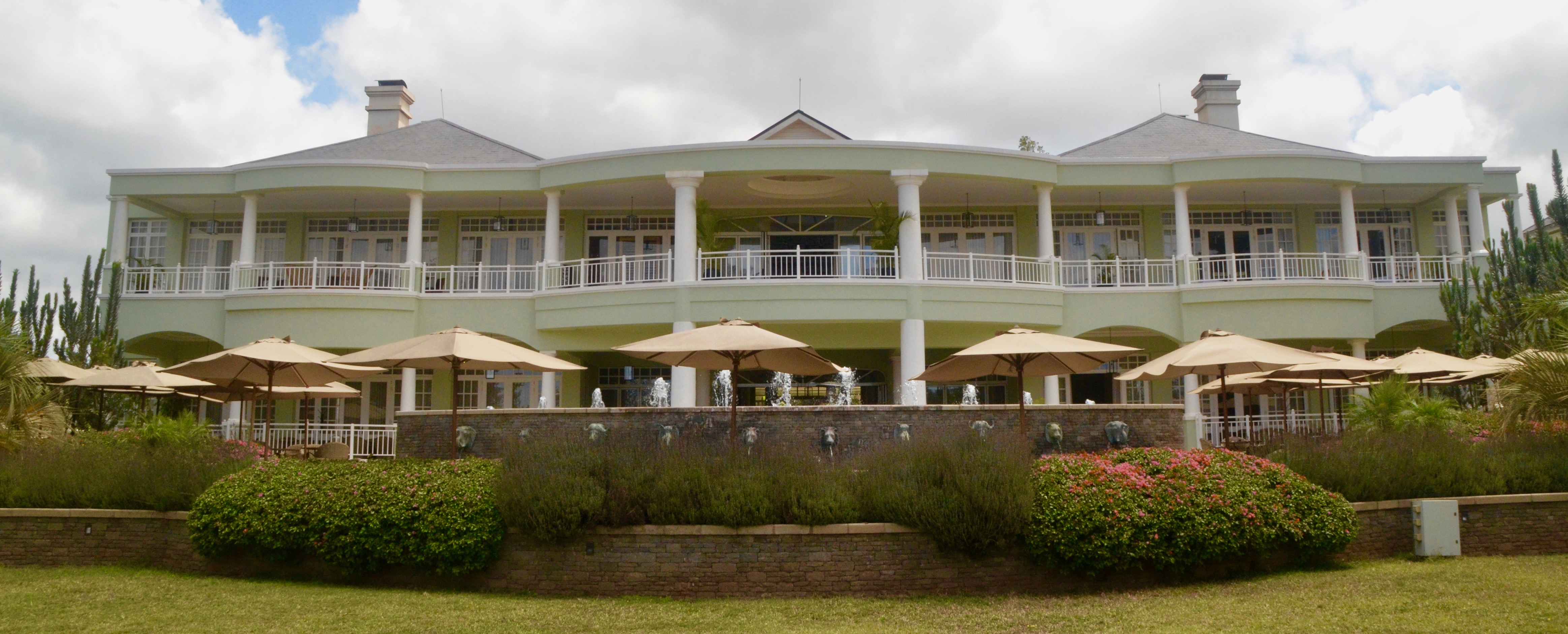
Hemingway in Paris
But if there was one place I really wanted to connect with Hemingway it was in Paris. Although A Moveable Feast was only published after Hemingway’s death in 1961 its description of the life of an aspiring writer with a young family had a profound impact on me. I too was an aspiring writer with a young family, but I copped out and took the easy road and to paraphrase Frost ‘That has made all the difference’. I wanted to see the places where Ernest had the determination and, yes selfishness, to take the road less traveled.
In searching “Hemingway in Paris” on Google I came across the name of David Burke the author of Winter in Paris: Lieterary Lives in the City of Light and the leader of Writers in Paris walking tours. This was exactly what I was looking for and I got in touch with David by email and arranged for a private tour. From our correspondence I learned he was a former 60 Minutes producer and a long time ex-pat in his adopted city. This morning Alison and my sister Anne, who is a veteran of many literary based tours are headed to Montparnasse to meet David and learn first hand about Hemingway in Paris.
Fittingly enough David asked us to meet him at the statue of Balzac by Rodin at the intersection of Boulevard de Montparnasse and Boulevard Raspail, two of Paris’ broader streets, lined with late 19th century buildings.
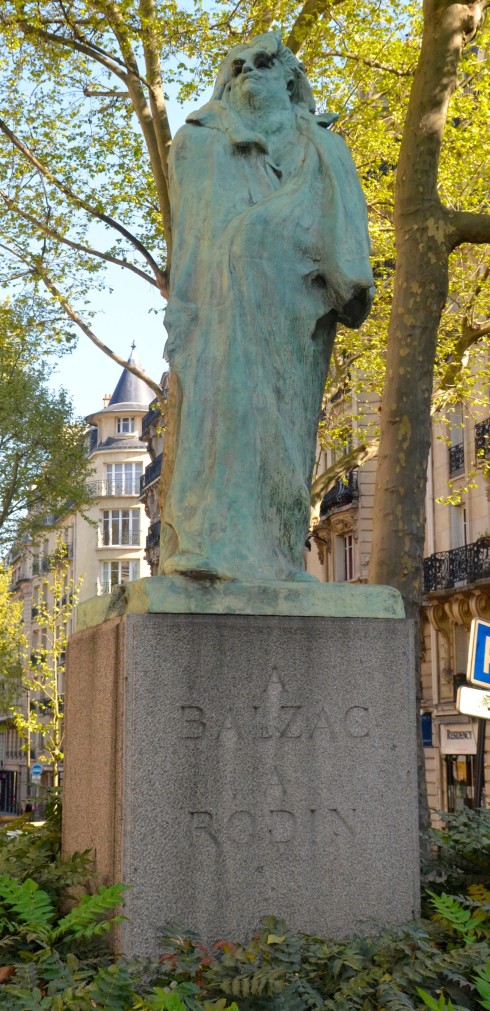
Le Dome & La Rotonde
David arrived carrying an over the shoulder bag from which over the next two and a half hours he produced a number of books, photographs and written notes that he used as props to help explain the stories he was narrating. While we all take for granted that Paris has this great outdoor cafe scene where aspiring writers, artists and philosophes meet, it had to start somewhere and the somewhere was right here at this intersection with the opening of Le Dome in 1898. It was the first of the grand cafes with their elegant art nouveau interiors and tables and chairs on the sidewalk where patrons could while away the hours sipping the drink of their choice, depending on the time of day.
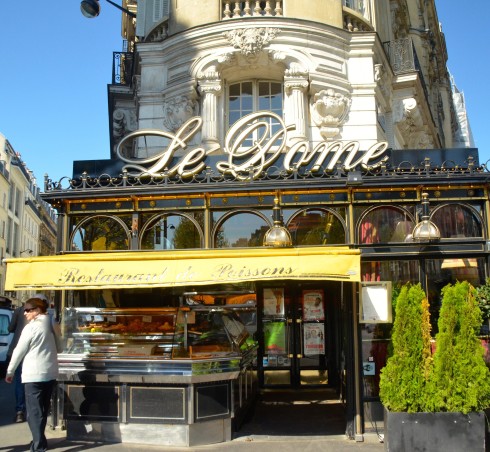
Long before Hemingway came to Paris Le Dome had become a gathering place for les artistes and it was soon emulated by La Rotonde across the street.

David explained that by the time Hemingway arrived in Paris each of the two cafes had their own dedicated followers and apparently Ernest came down on the side of Le Dome as he described the writers who frequented La Rotonde as essentially poseurs while the real deal, meaning himself of course, could be found across the street. That might come as news to Henry Miller and Anais Nin who began their torrid love affair with assignations that started innocently enough at La Rotonde. It also might surprise Simone de Beauvoir, who was born and raised in the building that houses the cafe and no doubt spent some time there as well.
Le Select
By the time Hemingway arrived in Paris in 1921 with his first wife Hadley Richardson, prohibition was well underway in the United States and the speak easy and the flapper culture of ‘anything goes’ that went with it had arisen. Jazz was the new thing and all things American were suddenly in vogue. In 1923, Le Select, describing itself as a café Americaine opened just down the street from La Rotonde. It became an immediate favourite of Hemingway’s.
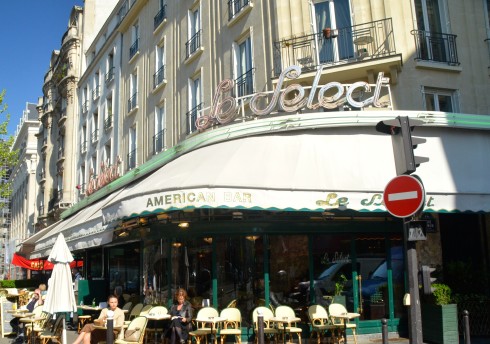
It was here that David first showed us why taking one of his tours is invaluable. Ordinarily you would not brazenly walk into a bar with no intention of buying anything and poke around taking pictures, but with David leading the way that’s not a problem. He explained that no less than four scenes from The Sun Also Rises, Hemingway’s first novel, take place here. It was also one of his favourite spots to write, as opposed to just drinking and socializing. Here I am trying to get some inspiration from sitting at possibly one of the same tables that Ernest did when he got inspired.
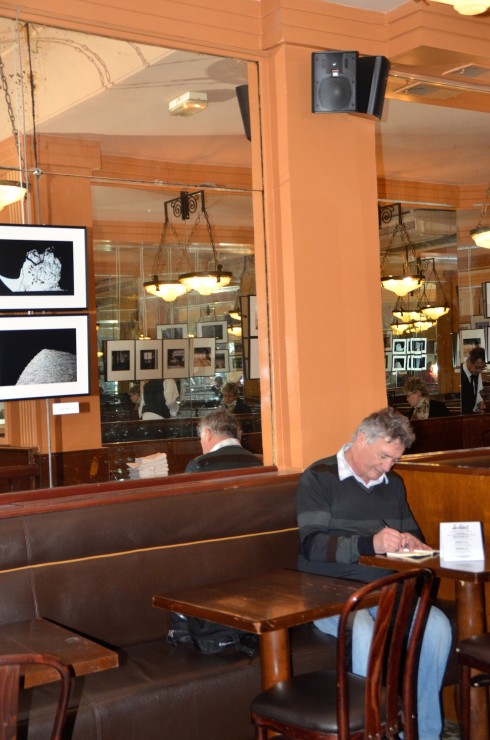
Hemingway in Paris – La Coupole
Unfortunately I’m forty years too late and a whole lot of talent short of Hemingway to get anywhere so David has us move on across the street to La Coupole, which has an absolutely gorgeous art deco interior that is worth seeing even if it had no connection with famous people.
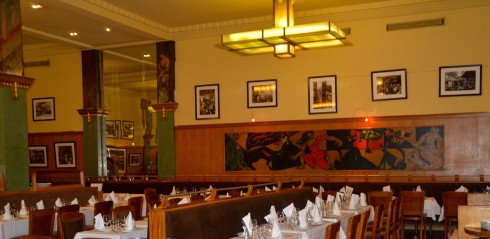
All of the places we visited today have great looking bars, but none nicer than this at La Coupole.
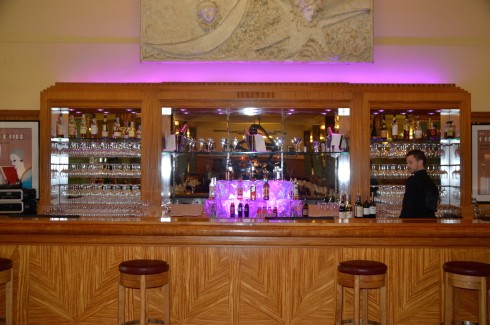
David also pointed out painted columns that were decorated by the proverbial ‘starving artist’ in exchange for free meals. Not a bad deal for the artists as apparently the quality of the food here is legendary. There are pictures on the wall of a great variety of famous artists and writers who were regulars here and are a virtual Who’s Who of early 20th century greats.
David narrated a number of stories that had taken place at La Coupole. The one I liked the best was the courting of the great American jazz singer, dancer and actress Josephine Baker not by notorious roué Picasso who was a regular here, but by the married Georges Simenon author of the great Inspector Maigret novels of which the very first one was partially set right here in La Coupole. Apparently the unlikely serial seducer was successful.
The Dingo Bar
From La Coupole we went a short distance up Rue Delambre to the unprepossessing exterior of L’Auberge de Venise, an Italian restaurant. David explained that its original incantation was the Dingo American Bar and Restaurant where legendary barman Jimmie Charters served drinks. Like a magician, he produced a copy of This Must be the Place a narrative of Charters’ experiences as a barman here serving the likes of Hemingway, Fitzgerald, Isadora Duncan and black arts practitioner Aleister Crowley. Hemingway write the introduction, something he wouldn’t do for anybody else.
At the entrance is this picture which claims that Hemingway invented the Long Island Iced Tea here. That might be a somewhat apocryphal story because, as David explained, Hemingway is also credited by some with inventing the Bloody Mary as well. In both cases it appears that he wanted to fool his wife into thinking he was just having an ice tea or glass of tomato juice.
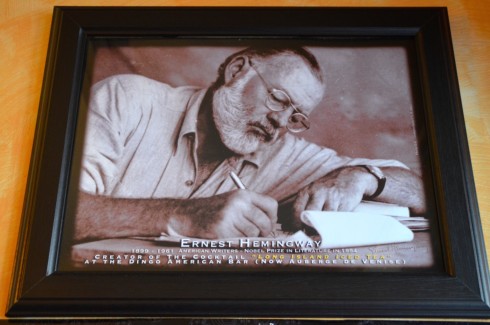
One thing that is not in dispute is that it was right here Hemingway first met F. Scott Fitzgerald as he described the meeting in A Moveable Feast. David now pulled this volume from his bag and read Hemingway’s very unflattering description of Fitzgerald’s appearance. This place too has a great bar and here I am with David Burke and my sister Anne in the same spot where two geniuses first met almost ninety years ago to the day on April 25, 1925.
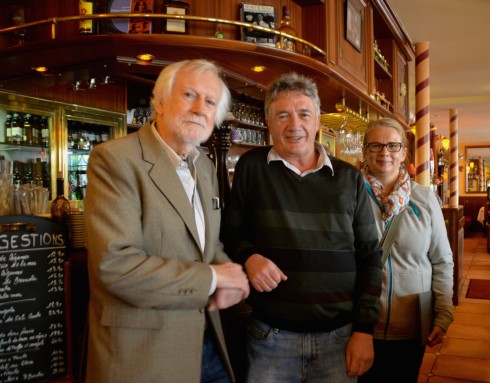
Hemingway in Paris – La Closerie des Lilacs
Our last stop on the bar scene was a little further up the Boulevard de Montparnasse at La Closerie des Lilacs which as you can see is aptly named.
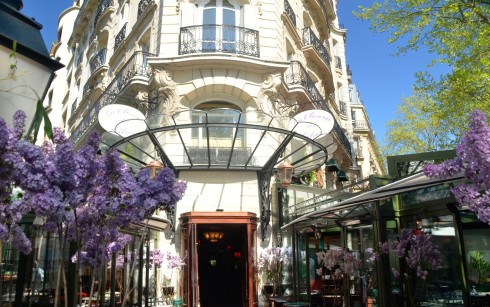
This was another of Hemingway’s favourite writing spots and a hangout for so many famous people that their names are on small brass plaques attached to their favourite table and their scribblings are reproduced on the place mats. This place also has a wonderful looking bar and beautiful art deco fixtures.
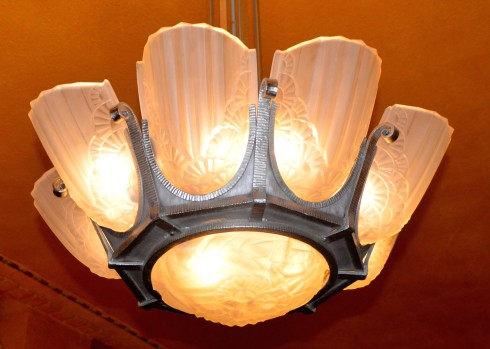
Gertrude Stein
From here David led us away from the busy streets of Montparnasse to quieter back streets where he showed us the site where Hemingway and Hadley lived, now since demolished, the buildings where Ezra Pound and Ford Madox Ford had studios and then through a portion of the Luxembourg Gardens where Hemingway loved to stroll. Our last stop was 27 Rue de Fleurus where Gertrude Stein literally held court at her salon there for thirty-five years.
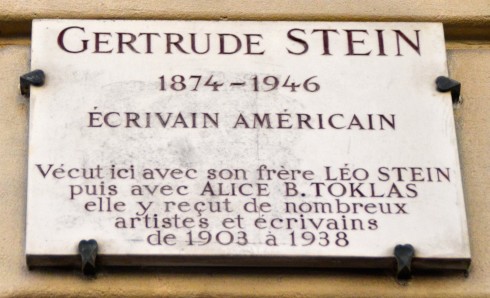
Today it is part of a private apartment complex hidden behind a locked gate, but David said to wait and somebody would come along and sure enough within minutes a resident went in and we followed.
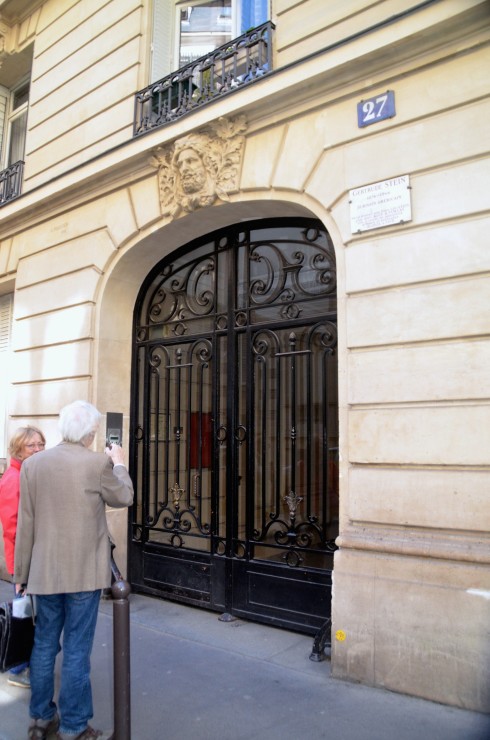
Inside David pointed out the exterior of the salon and pulled out The Autobiography of Alice B. Toklas by Stein which of course is not an autobiography at all, but rather a platform for Stein to tell the world what a great genius she (Stein) really was. David read a portion of the text where Toklas allegedly says that she has met only three geniuses in her lifetime – Picasso, Alfred North Whitehead and surprise – Gertrude Stein!
Hemingway was mentored by Stein who recognized his talents early on. In A Moveable Feast Hemingway writes that the relationship ended when he inadvertently overheard a pleading Stein begging Alice B. Toklas not to leave her and felt he could no longer be a regular at the salon. David said the true story was that Stein ended the relationship when she learned that Hemingway had abandoned the Paris publisher with whom she had set Hemingway up with for the American publisher Scribner’s.
I had come to look for Hemingway in Paris associated places and found them in spades plus many others associated with the Lost Generation, a term coined by Gertrude Stein. My thanks to David Burke and his intimate knowledge of writers in Paris.
David charges 50 euros per person for his personalized tours and it is worth every one of them. We are meeting him on Friday for a tour of Pere LaChaisse cemetery. Please join us.

